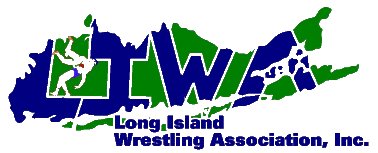
Long
Island Wrestling Association
|
|
|
|
||||||||||||||||||||||||||||||
|
John Gaglione's Off Season Wrestling Training # 1
Teaching Drills for Improving the BIG THREE: Part 1 Squat Drills The sport of
powerlifting is comprised of three main movements: The bench, the squat and the
deadlift. The reason these exercises are used in competition because between the
three movements you are literally working every single muscle in your body. For
that reason powerlifting is a great way to build and measure strength.
The squat is one of the greatest exercises an athlete can perform to help improve absolute strength and performance. Some forms of squatting should be in everyone’s strength training routine. This week we will discuss how we can use different exercises to improve squat technique. If you want to have powerful sprawls and explosive takedowns you need to have a good foundation of leg strength. Squats will build up the legs better than any other exercise I know.
It is important to note that some people may need additional exercises to improve hip mobility and thoracic spine (upper back) extension to improve their squat technique as well. When dealing with the athletic population this usually is not the case. Sometimes when
athletes perform the squat they don’t have the motor control to pull themselves
down correctly and they will end up with an anterior weight shift. The anterior
weight shift will put the athlete on their toes and they will end up with a poor
squat pattern. Wall Squats The Wall Squat will help combat this anterior weight shift problem very nicely. If an athlete has a problem with their knees shifting too far forward in a squat the wall squat is the best exercise to correct this.
The athlete will use the wall as a guide to help them squat more efficiently. The athlete will set up with the feet nearly touching the wall. The distance will vary depending on the individual, but in general should be an inch or less away. The athlete will then start to sit back and then squat down while keeping their chest out as they squat facing the wall. If the athlete rounds their back their face will smash into the wall. This cue works very nicely because in most people don’t won’t to hit their face on the wall!
When proper squat is performed they will be able to achieve a desirable depth without a problem. The only thing the coach needs to watch for is the extreme posterior pelvic tilt(where the low back rounds at the very bottom position). This means the athlete is squatting too low for the hip mobility that they currently have or it could be a technical flaw. Also make sure the athletes’ feet are flat on the ground and they do not roll to the outsides of their feet. We call this “frogging” the feet (looks like a frog) and this defeats the purpose of the drill. Other than that this drill is nearly fool proof.
Many athletes and
people in general will come to you and tell you they get knee pain when perform
squats. Often times if they have performed squat in the past they have used
improper form. Many times the same people who complain of knee pain will squat
with the knees coming inward while squatting.
This causes a lot of stress on the knee and is a very unsafe squatting pattern. Sometimes this is caused by lack of glute activation while squatting and other times the athlete simply needs to be cued to keep their knees out.
We can use an Elite
Fitness band or other tubing to actually force the athlete into the poor
pattern. This is what strength coach and physical therapist Gray cook calls
reactive neuromuscular training (RNT). The athlete will perform a squat with the
band above their knees. The athlete is FORCED to keep the knees out in order to
perform the squat.
You simply push the
athlete’s knees inward and should instruct your athlete to push your hands apart
as they squat. Provide just enough resistance for them to get in good position.
The great thing about this drill is you can continue to load the squat and still
use the band to reinforce good technique is so desired. I would also recommend combing this method with a box. Box squatting really teaches the lifter to sit back. This will help the lifter from coming up on their toes and will keep the weight more toward the back of the foot on the heels.
You can even combine both of these drills together to create an even more effective and faster teaching tool for all athletes. Start working these drills in your routine so you can master your squat technique and get super strong legs for the upcoming season!
Educate, Motivate, Dominate If you have any questions feel free to e-mail me at gaglionestrength@gmail.com or check out my website www.gaglionestrength.com To take your wrestling to the next level and ensure this coming wrestling season is your best one ever go to GaglioneStrength.com and e-mail Coach Gaglione for more information on wrestling training.
|